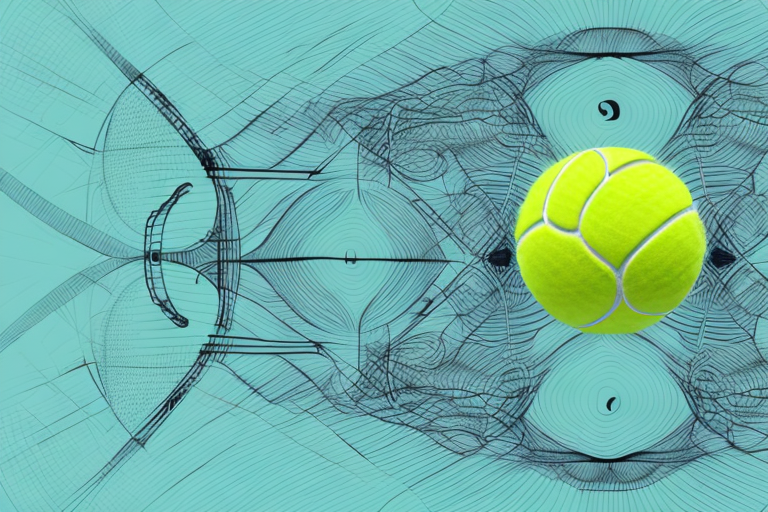If you suffer from chronic hip flexor pain or discomfort, you may have heard about the benefits of a tennis ball trigger point release. This technique involves using a tennis ball to apply pressure to specific areas of the hip flexors in order to release knots and tension. However, to get the most out of this method, it is important to understand hip flexor trigger points and how to prepare for the release.
Understanding Hip Flexor Trigger Points and Their Effects on the Body
Trigger points are areas of knots, tension, or inflammation within muscles that can cause pain, discomfort, and even referred pain in other areas of the body. In the case of hip flexors, trigger points can form due to prolonged sitting or standing, overuse or injury from sports, and muscle imbalances.
These trigger points can cause pain in the hip flexors, lower back, and legs, limit range of motion, and impact athletic performance. Trigger point release can help to alleviate these symptoms, improve mobility, and enhance athletic performance.
It is important to note that hip flexor trigger points can also be caused by emotional stress and tension. When we experience stress, our muscles tend to tense up, leading to the formation of trigger points. Therefore, it is essential to manage stress levels through relaxation techniques such as meditation, yoga, or deep breathing exercises to prevent the formation of trigger points in the hip flexors and other muscles.
Preparing for a Tennis Ball Trigger Point Release for Hip Flexors
Before beginning a tennis ball trigger point release, it is important to prepare the body and the mind. This includes warming up the muscles and joints, hydrating properly, and mentally preparing for the pressure and discomfort that may be experienced during the release.
Warming up can include light stretching, foam rolling, or low-impact cardio exercises. Hydration is important to facilitate the release of toxins and maintain muscle and joint health. Mentally preparing can involve mindfulness practices such as deep breathing and positive affirmations.
It is also important to understand the anatomy of the hip flexors and the location of trigger points before beginning the release. The hip flexors are a group of muscles that allow for movement of the hip joint and are located in the front of the hip. Trigger points are areas of muscle tension that can cause pain and discomfort. By understanding the location of trigger points in the hip flexors, you can target them more effectively during the release.
Finding the Right Tennis Ball and Surface for Effective Release
To get the most out of a tennis ball trigger point release, it is important to choose the right tennis ball and surface. A firm and smooth tennis ball is best, and a hard surface such as a yoga mat or hardwood floor can provide enough pressure to release the trigger points.
It is also important to consider the size of the tennis ball. A smaller ball may be more effective for targeting specific trigger points, while a larger ball can cover a larger area and provide a more general release. Experiment with different sizes to find what works best for your body and specific areas of tension.
Step-by-Step Guide to Using a Tennis Ball for Hip Flexor Trigger Point Release
Now that you are prepared and have the right tools, it is time to execute a tennis ball trigger point release. Here is a step-by-step guide:
- Find a firm and smooth tennis ball.
- Find a hard surface such as a yoga mat or hardwood floor.
- Lie face down on the ground.
- Place the tennis ball under the hip flexor region, between the hip bone and thigh bone.
- Apply pressure with your body weight and use your hands and legs to move the ball slightly to find and release trigger points.
- Hold the pressure for 30-60 seconds, or until you feel the trigger point release.
- Release the pressure and move on to the next trigger point.
- Repeat on the other hip flexor.
- Drink water and stretch afterwards.
It is important to note that while using a tennis ball for hip flexor trigger point release can be effective, it is not a substitute for professional medical advice or treatment. If you experience any pain or discomfort during the process, stop immediately and consult with a healthcare professional. Additionally, it is recommended to perform this technique under the guidance of a trained professional to ensure proper form and technique.
Modifications and Variations for Different Levels of Comfort and Pain
It is important to listen to your body and adjust the technique if you experience excessive pain or discomfort. Modifications and variations can include using a softer ball, using a towel or foam roller for added cushioning, or limiting the range of motion.
Additionally, it is important to note that modifications and variations can also be made based on different levels of comfort. For example, if you are a beginner, you may want to start with a smaller ball or limit the amount of pressure applied. As you become more comfortable with the technique, you can gradually increase the intensity and use a larger ball. It is also important to consider any pre-existing injuries or conditions and modify the technique accordingly.
The Benefits of Regular Hip Flexor Trigger Point Release with a Tennis Ball
Regular hip flexor trigger point release with a tennis ball can provide numerous benefits. These benefits include improved flexibility, reduced pain and discomfort, enhanced athletic performance, and decreased risk of injury.
In addition to the above benefits, regular hip flexor trigger point release with a tennis ball can also improve posture and alleviate lower back pain. Tight hip flexors can cause an anterior pelvic tilt, which can lead to lower back pain and poor posture. By releasing trigger points in the hip flexors, the pelvis can be realigned, reducing strain on the lower back and improving overall posture.
Common Mistakes to Avoid When Using a Tennis Ball for Hip Flexor Release
As with any technique, there are common mistakes to avoid. These mistakes can include using too much pressure, rolling too quickly over trigger points, or forgetting to hydrate and warm up properly.
Another common mistake to avoid when using a tennis ball for hip flexor release is not targeting the correct area. It’s important to locate the hip flexor muscles, which are located at the front of the hip, and apply pressure directly to those muscles. Rolling over other areas of the hip or leg may not provide the desired release and could even cause discomfort or injury.
Additional Techniques to Complement Tennis Ball Trigger Point Release
Tennis ball trigger point release can be complemented with other techniques such as foam rolling, stretching, and massage therapy. These techniques can provide additional benefits and help to create a comprehensive muscle and joint care routine.
When to Seek Professional Help for Chronic Hip Flexor Pain or Discomfort
If you are experiencing chronic hip flexor pain or discomfort, it is important to seek professional help. This can include a physical therapist or sports medicine practitioner who can provide a tailored treatment plan and help to identify underlying issues.
In conclusion, a tennis ball trigger point release can provide numerous benefits for those dealing with chronic hip flexor pain or discomfort. With the right preparation, tools, and technique, you can effectively release trigger points and improve your overall muscle and joint health.





